Tri Nhu Do
Generative and Explainable AI for High-Dimensional Channel Estimation
Apr 15, 2025Abstract:In this paper, we propose a new adversarial training framework to address high-dimensional instantaneous channel estimation in wireless communications. Specifically, we train a generative adversarial network to predict a channel realization in the time-frequency-space domain, in which the generator exploits the third-order moment of the input in its loss function and applies a new reparameterization method for latent distribution learning to minimize the Wasserstein distance between the true and estimated channel distributions. Next, we propose an explainable artificial intelligence mechanism to examine how the critic discriminates the generated channel. We demonstrate that our proposed framework is superior to existing methods in terms of minimizing estimation errors. Additionally, we find that the critic's attention focuses on the high-power portion of the channel's time-frequency representation.
Ground-to-UAV and RIS-assisted UAV-to-Ground Communication Under Channel Aging: Statistical Characterization and Outage Performance
Aug 01, 2024Abstract:This paper studies the statistical characterization of ground-to-air (G2A) and reconfigurable intelligent surface (RIS)-assisted air-to-ground (A2G) communications in RIS-assisted UAV networks under the impact of channel aging. A comprehensive channel model is presented, which incorporates the time-varying fading, three-dimensional (3D) mobility, Doppler shifts, and the effects of channel aging on array antenna structures. We provide analytical expressions for the G2A signal-to-noise ratio (SNR) probability density function (PDF) and cumulative distribution function (CDF), demonstrating that the G2A SNR follows a mixture of noncentral $\chi^2$ distributions. The A2G communication is characterized under RIS arbitrary phase-shift configurations, showing that the A2G SNR can be represented as the product of two correlated noncentral $\chi^2$ random variables (RVs). Additionally, we present the PDF and the CDF of the product of two independently distributed noncentral $\chi^2$ RVs, which accurately characterize the A2G SNR's distribution. Our paper confirms the effectiveness of RISs in mitigating channel aging effects within the coherence time. Finally, we propose an adaptive spectral efficiency method that ensures consistent system performance and satisfactory outage levels when the UAV and the ground user equipments are in motion.
DRL-Based Dynamic Channel Access and SCLAR Maximization for Networks Under Jamming
Feb 02, 2024Abstract:This paper investigates a deep reinforcement learning (DRL)-based approach for managing channel access in wireless networks. Specifically, we consider a scenario in which an intelligent user device (iUD) shares a time-varying uplink wireless channel with several fixed transmission schedule user devices (fUDs) and an unknown-schedule malicious jammer. The iUD aims to harmoniously coexist with the fUDs, avoid the jammer, and adaptively learn an optimal channel access strategy in the face of dynamic channel conditions, to maximize the network's sum cross-layer achievable rate (SCLAR). Through extensive simulations, we demonstrate that when we appropriately define the state space, action space, and rewards within the DRL framework, the iUD can effectively coexist with other UDs and optimize the network's SCLAR. We show that the proposed algorithm outperforms the tabular Q-learning and a fully connected deep neural network approach.
Joint Devices and IRSs Association for Terahertz Communications in Industrial IoT Networks
Feb 01, 2024
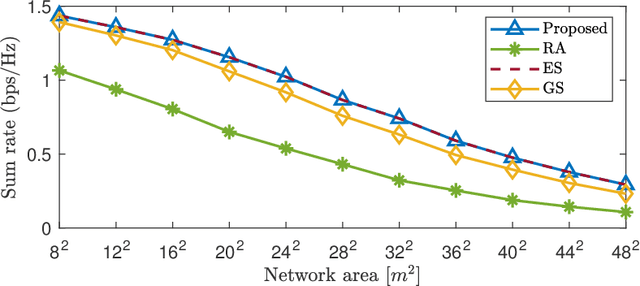

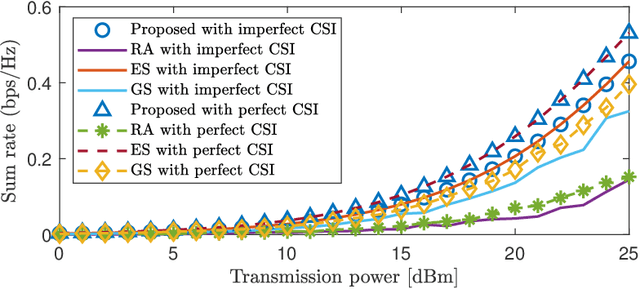
Abstract:The Industrial Internet of Things (IIoT) enables industries to build large interconnected systems utilizing various technologies that require high data rates. Terahertz (THz) communication is envisioned as a candidate technology for achieving data rates of several terabits-per-second (Tbps). Despite this, establishing a reliable communication link at THz frequencies remains a challenge due to high pathloss and molecular absorption. To overcome these limitations, this paper proposes using intelligent reconfigurable surfaces (IRSs) with THz communications to enable future smart factories for the IIoT. In this paper, we formulate the power allocation and joint IIoT device and IRS association (JIIA) problem, which is a mixed-integer nonlinear programming (MINLP) problem. {Furthermore, the JIIA problem aims to maximize the sum rate with imperfect channel state information (CSI).} To address this non-deterministic polynomial-time hard (NP-hard) problem, we decompose the problem into multiple sub-problems, which we solve iteratively. Specifically, we propose a Gale-Shapley algorithm-based JIIA solution to obtain stable matching between uplink and downlink IRSs. {We validate the proposed solution by comparing the Gale-Shapley-based JIIA algorithm with exhaustive search (ES), greedy search (GS), and random association (RA) with imperfect CSI.} The complexity analysis shows that our algorithm is more efficient than the ES.
Channel Characterization of UAV-RIS-aided Systems with Adaptive Phase-shift Configuration
Jan 30, 2024Abstract:This letter considers a UAV aiding communication between a ground transmitter and a ground receiver in the presence of co-channel interference. A discrete-time Markov process is adopted to model the complex nature of the Air-to-Ground (A2G) channel, including the occurrence of Line-of-Sight, Non-Line-of-Sight, and blockage events. Moreover, an adaptive phase-shift-enabled Reconfigurable Intelligent Surface (RIS) is deployed to combat A2G blockage events. Novel frameworks based on the shadowed Rician distribution are proposed to derive closed-form expressions for Ground-to-Air/A2G SINR' distributions. Numerical results show that RISs with large numbers of elements, e.g., 256 RIS elements, improve end-to-end Outage Probability (OP) and reduce blockages.
Statistical Characterization of RIS-assisted UAV Communications in Terrestrial and Non-Terrestrial Networks Under Channel Aging
Jan 30, 2024Abstract:This paper studies the statistical characterization of ground-to-air (G2A) and reconfigurable intelligent surface (RIS)-assisted air-to-ground (A2G) communications with unmanned aerial vehicles (UAVs) in terrestrial and non-terrestrial networks under the impact of channel aging. We first model the G2A and A2G signal-to-noise ratios (SNRs) as non-central complex Gaussian quadratic random variables (RVs) and derive their exact probability density functions, offering a unique characterization for the A2G SNR as the product of two scaled non-central chi-square RVs. Moreover, we also find that, for a large number of RIS elements, the RIS-assisted A2G channel can be characterized as a single Rician fading channel. Our results reveal the presence of channel hardening in A2G communication under low UAV speeds, where we derive the maximum target spectral efficiency (SE) for a system to maintain a consistent required outage level. Meanwhile, high UAV speeds, exceeding 50 m/s, lead to a significant performance degradation, which cannot be mitigated by increasing the number of RIS elements.
User Association Optimization for IRS-aided Terahertz Networks: A Matching Theory Approach
Jan 26, 2024



Abstract:Terahertz (THz) communication is a promising technology for future wireless communications, offering data rates of up to several terabits-per-second (Tbps). However, the range of THz band communications is often limited by high pathloss and molecular absorption. To overcome these challenges, this paper proposes intelligent reconfigurable surfaces (IRSs) to enhance THz communication systems. Specifically, we introduce an angle-based trigonometric channel model to evaluate the effectiveness of IRS-aided THz networks. Additionally, to maximize the sum rate, we formulate the source-IRS-destination matching problem, which is a mixed-integer nonlinear programming (MINLP) problem. To solve this non-deterministic polynomial-time hard (NP-hard) problem, the paper proposes a Gale-Shapley-based solution that obtains stable matches between sources and IRSs, as well as between destinations and IRSs in the first and second sub-problems, respectively.
Adaptive Decoding Mechanisms for UAV-enabled Double-Uplink Coordinated NOMA
Jun 27, 2022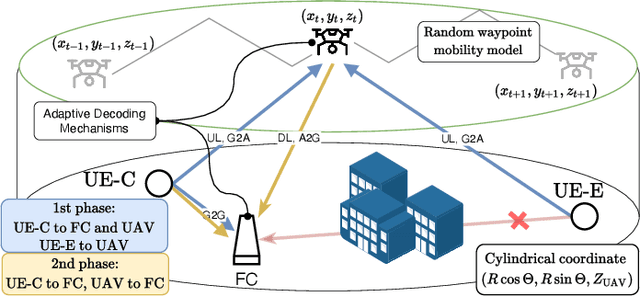
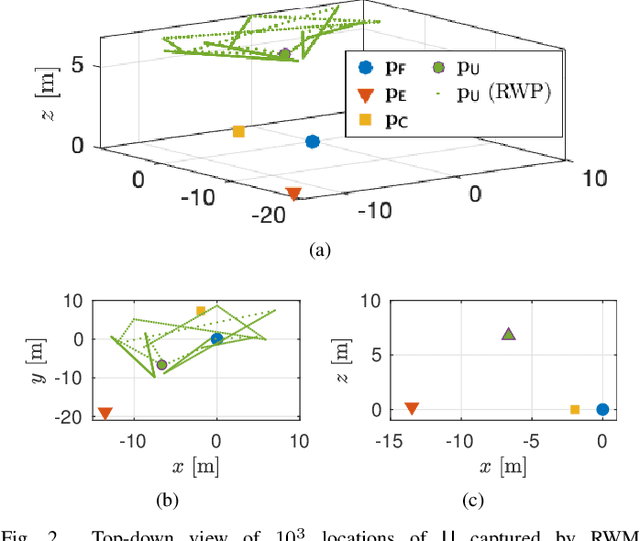
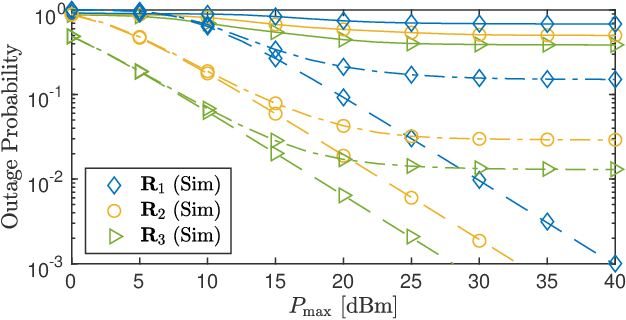
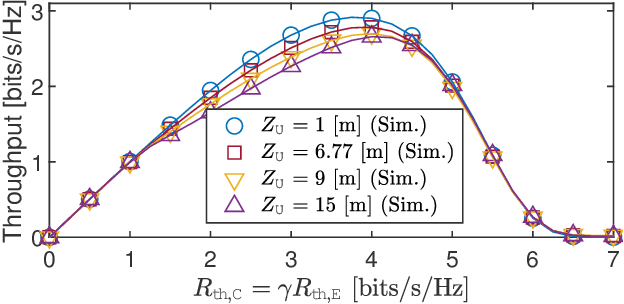
Abstract:In this paper, we propose a novel adaptive decoding mechanism (ADM) for the unmanned aerial vehicle (UAV)-enabled uplink (UL) non-orthogonal multiple access (NOMA) communications. Specifically, considering a harsh UAV environment where ground-to-ground links are regularly unavailable, the proposed ADM overcomes the challenging problem of conventional UL-NOMA systems whose performance is sensitive to the transmitter's statistical channel state information and the receiver's decoding order. To evaluate the performance of the ADM, we derive closed-form expressions for the system outage probability (OP) and throughput. In the performance analysis, we provide novel expressions for practical air-to-ground and ground-to-air channels while taking into account the practical implementation of imperfect successive interference cancellation (SIC) in UL-NOMA. These results have not been previously reported in the technical literature. Moreover, the obtained expression can be adopted to characterize the OP of various systems under a Mixture of Gamma (MG) distribution-based fading channels. Next, we propose a sub-optimal Gradient Descent-based algorithm to obtain the power allocation coefficients that result in maximum throughput with respect to each location on UAV's trajectory, which follows a random waypoint mobility model for UAVs. Numerical solutions show that the ADM significantly improves the performance of UAV-enabled UL-NOMA, particularly in mobile environments.
Performance Analysis of Multi-user NOMA Wireless-Powered mMTC Networks: A Stochastic Geometry Approach
Jan 13, 2022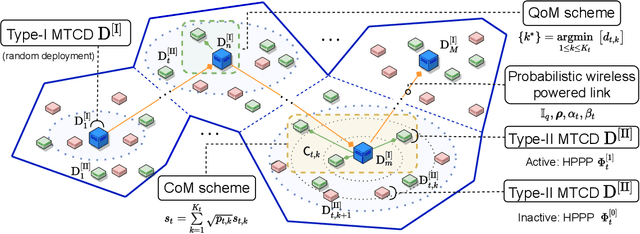
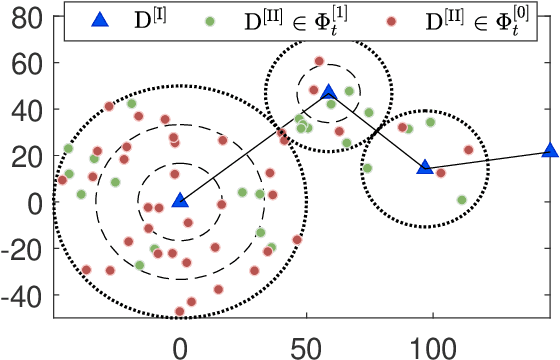
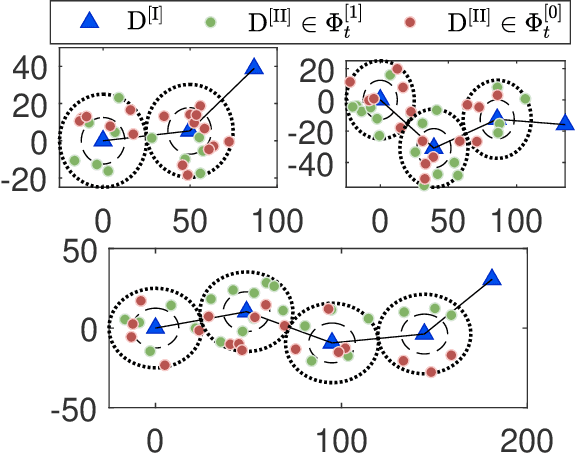
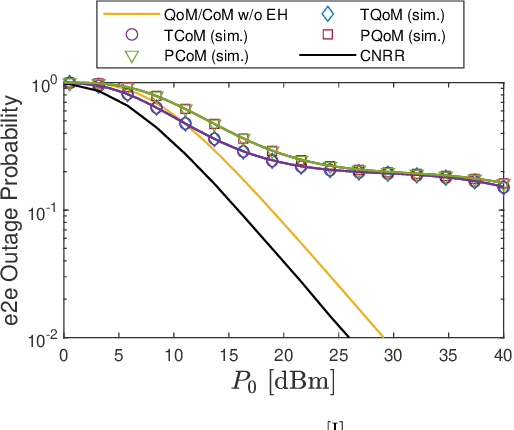
Abstract:In this paper, we aim to improve the connectivity, scalability, and energy efficiency of machine-type communication (MTC) networks with different types of MTC devices (MTCDs), namely Type-I and Type-II MTCDs, which have different communication purposes. To this end, we propose two transmission schemes called connectivity-oriented machine-type communication (CoM) and quality-oriented machine-type communication (QoM), which take into account the stochastic geometry-based deployment and the random active/inactive status of MTCDs. Specifically, in the proposed schemes, the active Type-I MTCDs operate using a novel Bernoulli random process-based simultaneous wireless information and power transfer (SWIPT) architecture. Next, utilizing multi-user power-domain non-orthogonal multiple access (PD-NOMA), each active Type-I MTCD can simultaneously communicate with another Type-I MTCD and a scalable number of Type-II MTCDs. In the performance analysis of the proposed schemes, we prove that the true distribution of the received power at a Type-II MTCD in the QoM scheme can be approximated by the Singh-Maddala distribution. Exploiting this unique statistical finding, we derive approximate closed-form expressions for the outage probability (OP) and sum-throughput of massive MTC (mMTC) networks. Through numerical results, we show that the proposed schemes provide a considerable sum-throughput gain over conventional mMTC networks.
Aerial Reconfigurable Intelligent Surface-Aided Wireless Communication Systems
Jun 09, 2021
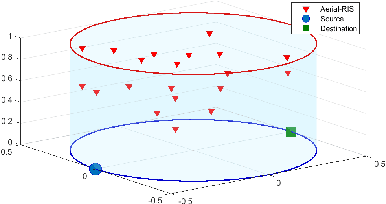
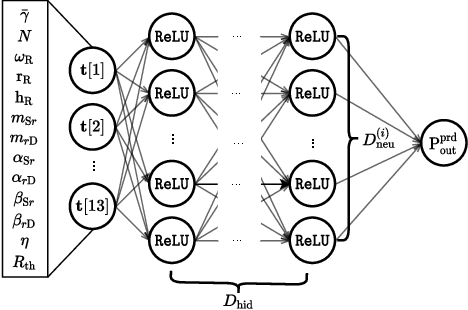
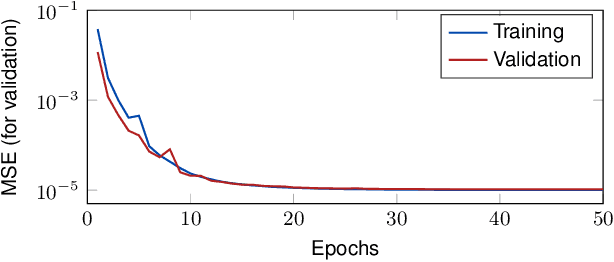
Abstract:In this paper, we propose and investigate an aerial reconfigurable intelligent surface (aerial-RIS)-aided wireless communication system. Specifically, considering practical composite fading channels, we characterize the air-to-ground (A2G) links by Namkagami-m small-scale fading and inverse-Gamma large-scale shadowing. To investigate the delay-limited performance of the proposed system, we derive a tight approximate closed-form expression for the end-to-end outage probability (OP). Next, considering a mobile environment, where performance analysis is intractable, we rely on machine learning-based performance prediction to evaluate the performance of the mobile aerial-RIS-aided system. Specifically, taking into account the three-dimensional (3D) spatial movement of the aerial-RIS, we build a deep neural network (DNN) to accurately predict the OP. We show that: (i) fading and shadowing conditions have strong impact on the OP, (ii) as the number of reflecting elements increases, aerial-RIS achieves higher energy efficiency (EE), and (iii) the aerial-RIS-aided system outperforms conventional relaying systems.
 Add to Chrome
Add to Chrome Add to Firefox
Add to Firefox Add to Edge
Add to Edge